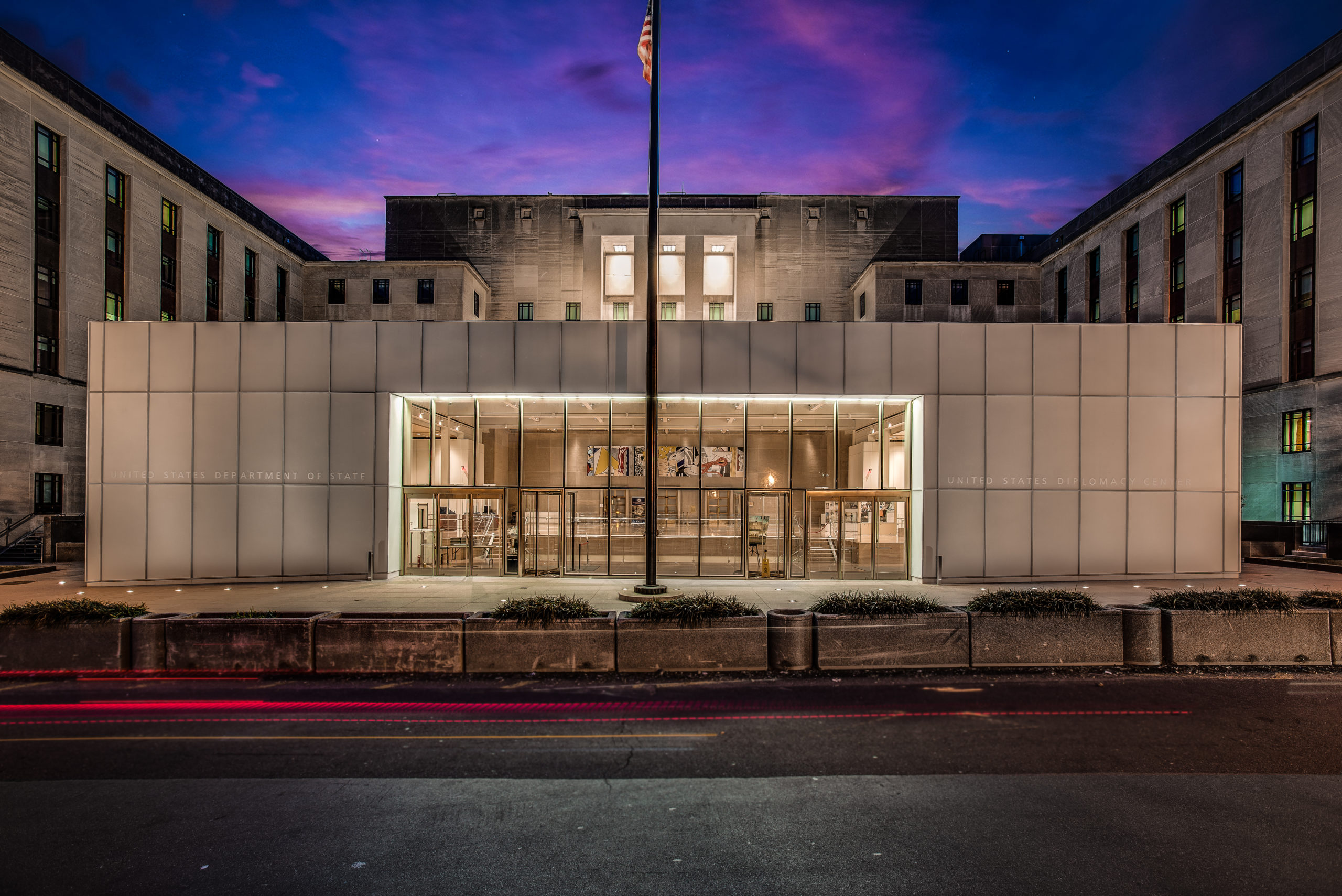Peace, commerce, and honest friendship with all nations
– Thomas Jefferson
The first US secretary of state cited these basic objectives in 1801 during his inaugural address as the third President of the United States. This vision guided Thomas Jefferson as he pursued effective diplomacy in the American national interest.
Two hundred years later, two statesmen recognized the need to build a museum that demonstrates the importance of American diplomacy in the history of the United States. Ambassador Stephen Low (1927 – 2010) and Senator Charles McC. Mathias of Maryland (1922 – 2010) founded the Foreign Affairs Museum Council (FAMC), a nonprofit organization, to help build the first museum dedicated to American diplomacy by raising funds from the private sector. In 2013, the FAMC Board of Directors changed its name to Diplomacy Center Foundation.
In 1999, Ambassador Low and Senator Mathias met with Secretary of State Madeleine K. Albright about their vision for an American diplomacy museum and education center. Secretary Albright recognized this need and agreed the museum should be located at the Department of State. Assistant Secretary, later undersecretary, Patrick F. Kennedy identified 20,000 square feet of interior space that would become the US Diplomacy Center. An office and staff were established that included Priscilla R. Linn, DPhil, as senior curator.
Beyer Blinder Belle Architects was competitively awarded the project to design the new 20,000 square foot entrance pavilion located at the 21st Street entrance of the Department of State. The pavilion will house hall I, which includes the “Discover Diplomacy” exhibit about the practice of diplomacy today and the Founding Ambassadors Concourse. The Concourse will host the Museum’s educational conferences, symposiums, events, and public programs. The Museum will extend into two renovated interior halls that cover 230 years of American diplomacy history and allow visitors to practice the art of diplomacy through historical and hypothetical scenarios and dynamic decision-based exhibits. There will also be a mezzanine space in the Historic Lobby connecting the pavilion and two interior halls.
In 2010, Secretary Hillary R. Clinton appointed Ambassador Elizabeth Frawley Bagley, former US ambassador to Portugal, to lead fundraising efforts for the project. That same year, Ambassador William C. Harrop, a career senior Foreign Service officer who served as ambassador to five countries, assumed the leadership of the Diplomacy Center Foundation.
On September 3, 2014, the groundbreaking for the United States Diplomacy Center took place with the participation of Secretaries of State Kissinger, Baker, Albright, Powell, Clinton, and Kerry. Construction of the pavilion was completed in January 2017. The Diplomacy Center Foundation continues to seek private sector funds to complete the new facility. The State Department and the Diplomacy Center Foundation are sincerely grateful to all the donors whose support is making this significant institution possible.
In November 2019, US Secretary of State Michael R. Pompeo, with the consent of the US Congress, renamed the US Diplomacy Center to the National Museum of American Diplomacy (NMAD) at the Foundation’s annual Excellence in Diplomacy award dinner. In 2020, the Diplomacy Center Foundation welcomed Ambassador Thomas R. Pickering as chairman. Ambassador Pickering is a career ambassador and Foreign Service Officer who served as the US ambassador to seven countries.
The Foundation is currently in phase II of its capital campaign to raise $35 million for the design, fabrication, and installation of exhibits and reconfiguration of an additional 20,000 square feet of space within the main State Department building. To date, $53 million of private sector funds have been raised from corporations, foundations, and individuals toward the $85 million needed to build the museum.
Nonprofit Organization Information:
- 501(c)(3) Status
- February 18, 2000: Incorporated in District of Columbia as the Foreign Affairs Museum Council
- May 18, 2000: Advanced ruling of 501(c)(3) tax-exempt status
- July 28, 2005: Classified as a 170(b)(1)(A)(vi) Public Charity
- September 2013: Changed name from Foreign Affairs Museum Council to Diplomacy Center Foundation

